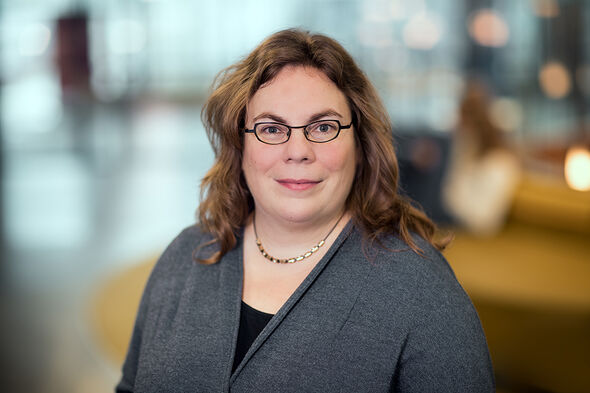Selection with ‘distributed BAC’
A few years ago, part of the department of M&CS started working with a variant of the ‘BAC,’ – the traditional interview during which a candidate has to appear in front of the full appointment advisory committee – when appointing scientific personnel. Full professor Bettina Speckmann brought the best practice of the distributed BAC with her from Canada. “It’s a more extended procedure, but the process is less time-consuming for committee members. The candidate meets with small groups for several talks, so that every facet is sufficiently covered.”
Anyone who has ever interviewed for a position of associate or full professor has sat in front of the BAC, short for ‘appointment advisory committee’, benoemingsadviescommissie in Dutch. Traditionally, candidates meet with the full BAC, made up of five to eight members, for a ninety-minute selection interview.
Each member focuses on his or her own field of expertise: research, education, impact. A committee member from a different department adds an independent, outside view, and a chair leads the meeting. After each candidate is interviewed, the BAC holds a conclave: who is the best candidate?
During a distributed BAC, however, each focus area is tested separately, full professor of Applied Geometric Algorithms Bettina Speckmann explains. “Each candidate gives a research presentation and a mini lecture. In addition, there are three short interviews, each with different BAC members, about research, education and impact respectively. Candidates also meet with PhD candidates and, ideally, with a HR officer. This officer shows the candidate around campus and gains an impression of a candidate in the process.” Each part of the process takes no more than thirty minutes. Afterwards, everyone reports to the chair and engages in a meeting that ends when a consensus is achieved.
Keeping busy
A distributed BAC keeps a candidate busy for a minimum of half a day. For committee members, on the other hand, it’s a less time-consuming process, Speckmann says. “Apart from the short presentation and mini lecture, they usually attend one interview per candidate, as well as the final meeting.”
But candidates too will find the distributed BAC a much more enjoyable experience than the classic version, she believes. “The interviews are not as intense as a meeting with a full committee because they take place in a smaller setting. The meeting is more equal, more like a conversation.” Also, candidates get a thorough impression of what the function entails and of their potential future colleagues.
The main advantage of distributed BAC, Speckmann believes, is that every field of expertise – research, education and impact – is sufficiently covered during the interviews. “During a traditional BAC, that balance lies in the hands of the chair, whose job it is to prevent one committee member from dominating the interview, for example. Sometimes, the topic of research is covered extensively, without anyone knowing anything about a candidate’s experience with teaching.”
Correct
Cursor’s suspicion that there’s a connection between the distributed BAC and the introduction of Recognition & Rewards – where the balance between research, educations and impact takes center stage – proves to be unfounded. Internationally, this is not a new method, but a familiar practice. Speckmann was introduced to it around the turn of the millennium when she obtained her doctoral degree at the University of British Columbia in Canada. When she started working at TU/e, she introduced the method to her cluster. By now, a number of other groups within the department of Mathematics & Computer Science have adopted this method.
“During my time as a PhD candidate, I enjoyed taking part in these procedures. Very interesting, and a good way to gain experience for when I myself become a candidate one day. The other committee members took our input seriously. That’s also because some candidates behaved less correctly towards a PhD candidate than towards a full professor, unfortunately. That is useful information, also in light of social safety in the workplace.”
Fair and transparent
PhD candidates receive advance training on how to hold meetings with candidates. And there’s also a canon of questions available for the expertise areas research, education and impact, so that the committee members acquire the necessary information from the separate interviews. “But most of the time, everyone’s impressions seem to correspond surprisingly well. During the final meeting we always arrive at a consensus within an hour, and everyone is very satisfied with the chosen candidate.”
The method fits well with the professionalization of work processes, Speckmann says. “There’s no such thing as a fully objective selection procedure, but we can at least create conditions that are fair and transparent. We also intend to use this method for filling 25 new vacancies within M&CS.”



Discussion